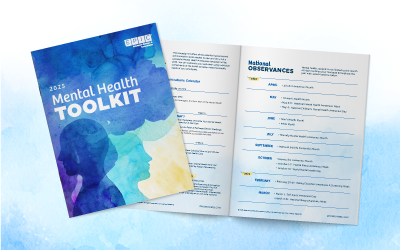Quick Facts
- A recent Blue Cross Blue Shield antitrust lawsuit resulted in a proposed settlement of $2.67 billion dollars.
- The final hearing on the settlement will be held on October 20, 2021.
- Multiple different damages classes including fully insured and self-funded plans are eligible to receive payment under the settlement.
- Individuals and plans who wish to seek payment must take action to file a claim or opt out to retain the right to sue.
Introduction
Many individuals and employers have recently received a postcard informing them of a proposed $2.67 billion settlement stemming from a 2012 class action lawsuit (In re: Blue Cross Blue Shield Antitrust Litigation MDL 2406, N.D. Ala. Master File No. 2:13-cv-20000-RDP) that alleged anti-competitive behavior/collusion among member companies of the Blue Cross Blue Shield Association. The final hearing deciding whether to approve the settlement will be held on October 20, 2021.
Background
In 2012, plaintiffs alleged that the Blue Cross Blue Shield Association and its 35 member companies violated the Sherman Antitrust Act by agreeing not to compete in selling health insurance and administration of commercial health benefit products in the United States and Puerto Rico, as well as agreeing to other means of limiting competition in the health insurance market and administration of products. In 2020, a proposed settlement was reached and received preliminary approval by a federal judge in Alabama.
Key Provisions of the Settlement
Settlement Terms
Under the terms of the settlement, the Blue Cross Blue Shield Association and its member plans would agree to:
- Make changes to the way they do business to increase opportunities for competition in the health insurance market; and
- Allow qualified national self-funded accounts to request a second bid for coverage from a member plan of their choice (“Second Blue Bid”).
As part of this agreement, a monitoring committee would be established for 5 years to mediate disputes resulting from the implementation of the above two efforts.
These terms would apply to all class members (both the “damages class” and “injunctive relief class” described below”).
Settlement Amount
If the settlement is approved in October, then the settlement amount, minus attorneys’ fees and administrative expenses, will result in a net benefit of approximately $1.9 billion that will be distributed to authorized claimants within the settlement’s “damages class” (described below).
Damages Classes
The following classes may be eligible for payment from the settlement amount:
- Individuals that purchased or were enrolled in a Blue Cross or Blue Shield health insurance or administrative services plan between February 7, 2008 – October 16, 2020;
- Insured Groups[1] (and their employees) that purchased or were enrolled in a Blue Cross or Blue Shield health insurance or administrative services plan between February 7, 2008 – October 16, 2020; and
- Self-Funded Accounts[2] (and their employees) that purchased or were enrolled in a Blue Cross or Blue Shield health insurance or administrative services plan between September 1, 2015 – October 16, 2020.
Injunctive Relief Class
Dependents, beneficiaries (including minors), and non-employees are not part of the damages class and are not eligible to receive payment; however, they will still benefit from changes made to current market practices as a result of the settlement.
Settlement Distribution
The $1.9 billion net settlement amount will be split into two funds, with $1.78 billion allocated to individuals and insured groups (and their employees) and $120 million allocated to self-funded accounts (and their employees). These two funds will be kept separate. Payments will be made to authorized claimants according to the following formulas:
Individuals/Insured Groups (and their employees)
“Total Premiums Paid” during FI Class Period by FI Claimant A
Divided by
Total Premiums Paid during FI Class Period by all FI Authorized Claimants who submit claims
Multiplied by
Total dollars in FI Net Settlement Fund
= FI Claimant A’s claim payment
The total premiums paid will be the sum of premiums paid for commercial health benefit products (including medical, pharmacy, vision, and dental plans) to any of the defendants for coverage during the class coverage periods described above (pro-rated for the partial months of February 2008 and October 2020). This amount will be calculated based on data provided by the Blue Cross member plans. Claimants will not have to submit any premium data unless it is specifically requested.
When a fully insured employer and its employee both submit a claim, total premiums paid by each will be determined based on a default allocation process that assumes:
- 15% by the employee for single coverage/85% by the employer; or
- 34% by the employee for family coverage/66% by the employer.
Self-Funded Accounts (and their employees)
“Total Administrative Fees Paid” during Self-Funded Class Period by Self-Funded Claimant B
Divided by
Total Administrative Fees Paid during Self-Funded Class Period by all Self-Funded Authorized Claimants who submit claims
Multiplied by
Total dollars in Self-Funded Net Settlement Fund
= Self-Funded Claimant B’s claim payment
The “Administrative Fees” to be used in the calculation above will include fees paid for any commercial health benefit product, including the administration of medical, pharmaceutical, vision, and dental plans, plus any amounts paid for stop-loss insurance. This amount will be calculated based on data provided by the Blue Cross member plans. Claimants will not have to submit any premium data unless it is specifically requested.
When a self-funded employer and its employee both submit a claim, total administrative fees paid by each will be determined based on a default allocation process that assumes:
- 18% by the employee for single coverage/82% by the employer; or
- 25% by the employee for family coverage/75% by the employer.
For both fully insured and self-funded claimants, employers and employees have the option, when filing, to elect an alternative option for calculating the allocation. In this case, the Claims Administrator will contact them and provide them the opportunity to submit additional evidence to support their case before making a final determination. If the request for the alternative option is rejected, the calculation will revert to the default allocation.
In cases where the employer does not elect the alternative option, but one or more employees does (and their election is approved), the alternative calculation will only be used for those employees who requested it. However, in cases where the employer elects the alternative option (and it is approved), the alternative calculation will be used for the employer and all filing employees.
When calculated payments total $5 or less, no distribution will be made to a claimant.
Options for Damage Class Members
The Notice of Proposed Settlement was issued to inform employers and individuals who are eligible for payment (the damage class) about the proposed settlement and give them time to decide what action (if any) they wish to take and the deadlines for doing so. If the settlement is approved, class members will be bound by the terms of the settlement unless they affirmatively opt out of the settlement. The following table describes the options these class members have.
| Options for Damage Class Members | ||
|---|---|---|
| Option | Details | Due Date (Subject to Change) |
| File Claim | November 5, 2021 | |
| Do Nothing | N/A | |
| Opt Out | July 28, 2021 | |
| Object | July 28, 2021 | |
| Speak at Hearing | Notice of Intent due July 28, 2021 | |
Of note here is the fact that while those who choose to do nothing will not be eligible for payment, it is only when somebody actively opts out of the settlement that they will retain the right to sue and not be bound by the settlement’s terms.
What Can/Should Employers Do?
Employers may receive questions from their employees about this settlement, including advice on whether to file a claim or requests for information the employee needs to submit as part of their claim submission. While employers do not have any formal obligations to provide any notice/information, it may be helpful to provide some type of notice explaining the settlement to employees and informing them that they may have the right to file their own claims. Employees may also request certain information from employers (e.g., group numbers, policy numbers, coverage dates, etc.) that they need to file their claims. If employers have this information readily available, they may wish to provide it to employees (although again, there is no specific requirement to do so). Employers should be cautious in any communications with employees and should avoid saying or doing anything that appears to dissuade employees from filing their own claims.
Employers may find additional information and Frequently Asked Questions regarding this settlement at the BCBS Settlement Website.
Next Steps
Next steps for employers who are eligible to file a claim:
- Decide whether to:
- File Claim
- If filing a claim, determine whether to use default assumptions or elect an alternative option for calculating allocation.
- Do Nothing
- Opt Out
- Object
- Speak at Hearing
- File Claim
- Decide whether to communicate to employees
- If communicating upfront, determine what information to provide upon request, if any.
Conclusion
It is important for employers to keep in mind that any individual settlement amount is likely to be relatively small – e.g., a few hundred dollars for a large employer, and under $100 for any individual employee. So, while it will be important to understand the allocation methods and the filing options, perspective is needed when determining whether to propose an alternative allocation formula or engage the services of a third-party vendor to assist with this calculation/filing. The major changes employers will see (and perhaps benefit from) will be the changes to the Blue Cross members’ practices, which should result in increased market competition and lower payments for employers and employees alike.
[1] Insured Groups include both employers and other groups (e.g., Taft-Hartley plans, multi-employer welfare arrangements, association health plans, retiree groups, and other non-employer groups).
[2] Self-Funded Accounts include both employers and other groups (e.g., Taft-Hartley plans, multi-employer welfare arrangements, association health plans, retiree groups, and other non-employer groups).
EPIC Employee Benefits Compliance Services
For further information on this or any other topics, please contact your EPIC consulting team.
Learn About Our Employee Benefits Compliance Services
EPIC offers this material for general information only. EPIC does not intend this material to be, nor may any person receiving this information construe or rely on this material as, tax or legal advice. The matters addressed in this document and any related discussions or correspondence should be reviewed and discussed with legal counsel prior to acting or relying on these materials.
DOWNLOADABLE RESOURCES
Sign up for our Compliance Matters Newsletter
You’ll receive our monthly newsletter, as well as special compliance alerts and invitations to our compliance webinars
Related Content
Products
Employee Benefits Consulting
Our dedicated benefits team is focused on delivering better outcomes – to both your benefits program and ...
Products
Compliance
We provide comprehensive consulting services and in-depth education regarding the ever-changing employee ...
Products
Actuarial
Our Actuarial Team provides guidance on employee benefits and health and welfare programs to help meet ...


